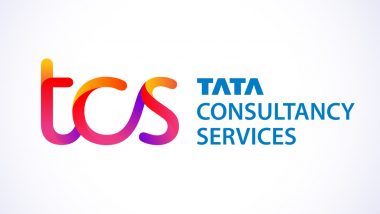Enterprises that have been dragging their feet or are actually quite hesitant to expand their capabilities by adopting a cloud computing approach run the risk of falling behind the competition. This is an issue that businesses with multiple offices really need to think about, since cloud computing makes it much easier to tie together locations that are geographically dispersed.
If your company currently lacks sufficient staff (with the requisite knowledge and experience) to monitor and upgrade your local servers and haven’t planned to migrate to a cloud solution, you’re doing yourself a disservice. A cloud setup means less work for your team.
It also has the benefit of high availability and redundancy to keep your operations humming along, even in the face of local issues with computers. And with the growth in work-from-home initiatives, connecting your team via the cloud makes a lot of sense these days. It’s a trend we anticipate will only grow through 2021.
The advent of cloud computing means that businesses developing software as a service can offer their tools to businesses that previously would find it more difficult to deploy these applications.
A web browser interface or custom dashboard makes it so employees can work while out in the field or from out of their home offices, connecting with customers who are also out and about or working from home themselves.
The Global Coronavirus Pandemic Reveals the Truth About Remote Work
Since the early days of the global coronavirus pandemic causing COVID-19 infections, organizations from businesses to schools began shutting their doors in a bid to keep people socially distant from one another.
Individuals who had never worked from home before now suddenly faced a new reality where often they had to serve as their own tech support. Of course, some enterprises had more technological support staff than others, so the rollouts went smoothly for some and were a mess for others. People hadn’t predicted how video conferencing would become a major tool for connecting teams.
Businesses also began to realize the value of SaaS or software as a service. With cloud computing capability, they could allow employees, such as customer service representatives, technical support, sales and others work from remote. The customers or business-to-business counterparts they were serving also happened to be at home for the most part.
Some might even scale down the amount of office space they occupy, lowering the costs of operations even further with more workers laboring away from the office.
Addressing the Remote Economy With iAgent
The new remote economy, which insiders often also refer to as the hybrid economy, makes for a more versatile and nimble company. A major example is iAgent, which Xigem Technologies Corporation offers as an out-of-the-box solution for small-to-medium businesses.
It’s a customer relationship management application that integrates well with an SME’s existing software and hardware setup. Companies in widely divergent industries may benefit from it today.
For examples, financial services professionals might use it to manage assets. Construction firms would deploy iAgent to facilitate and coordinate the schedules of multiple remote workers. From order fulfillment specialists to cross-country movers to businesses devoted to delivering goods, iAgent has the ability to connect the employees, supervisors and customers/clients without regard to their location.
Any business where employees are already working from home or that is planning on launching a WFH program will do better when it has the right software tools in place.
Led by CEO Brian Kalish, Xigem is actively expanding its holdings to provide a comprehensive portfolio of technologies aimed at industries including education, finance, insurance, healthcare, logistics, professional services and nonprofit efforts.
The philosophy guiding Xigem’s approach to investment is to focus on early-stage tech companies, focused on the digital economy with solid revenue or the immediate near term potential to produce revenue. They are working to create a comprehensive portfolio of remote work technologies, funded with shares or cash (or a combination),.
With the cloud-based Software as a Service business model, Xigem is interested in providing support for remote health and fitness, administration, marketing, operations, purchasing and sales.
Remote work, learning, treatment, conferencing/messaging as well as customer service processes that are all well suited to Xigem’s technology and software efforts.
In some cases, an SME doesn’t have many options when it comes to attracting, recruiting and hiring new talent. With labor shortages in your community, you will have to come up with a solution to develop a full team.
So being able to coordinate the work of employees in distant locations becomes less of a problem and more of an opportunity to bring new ideas and abilities into your business. If the cost of living is high where your company was founded, you may find it easier to hire people if you let them live in a less expensive community, from remote via iAgent software in the cloud.
Anticipating Wider Adoption of SaaS and Cloud Solutions This Year
With so many industries to be impacted by the growing use of software as a service and cloud computing, it makes sense for enterprises to take advantage of platforms that make it easy and efficient to connect their teams and foster collaboration. That’s especially important as more individuals transition to remote work setups.
Customers and the employees who serve them are increasingly using smartphones, tablets and laptops while they’re away from home or the home office. It’s clear that helping them work while mobile is going to be essential for all types of businesses in 2021, as the remote economy grows even more entrenched.














 Quickly
Quickly



















